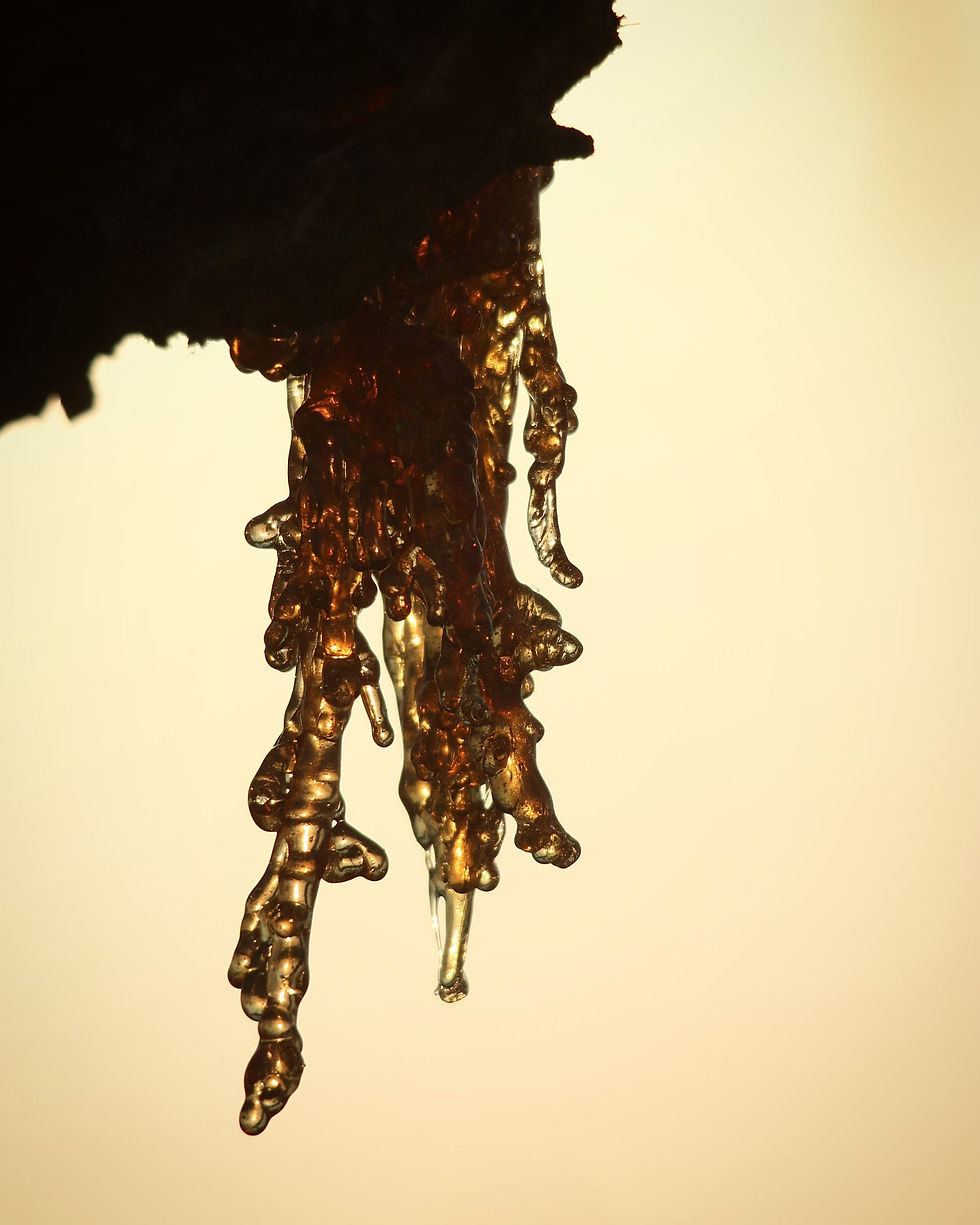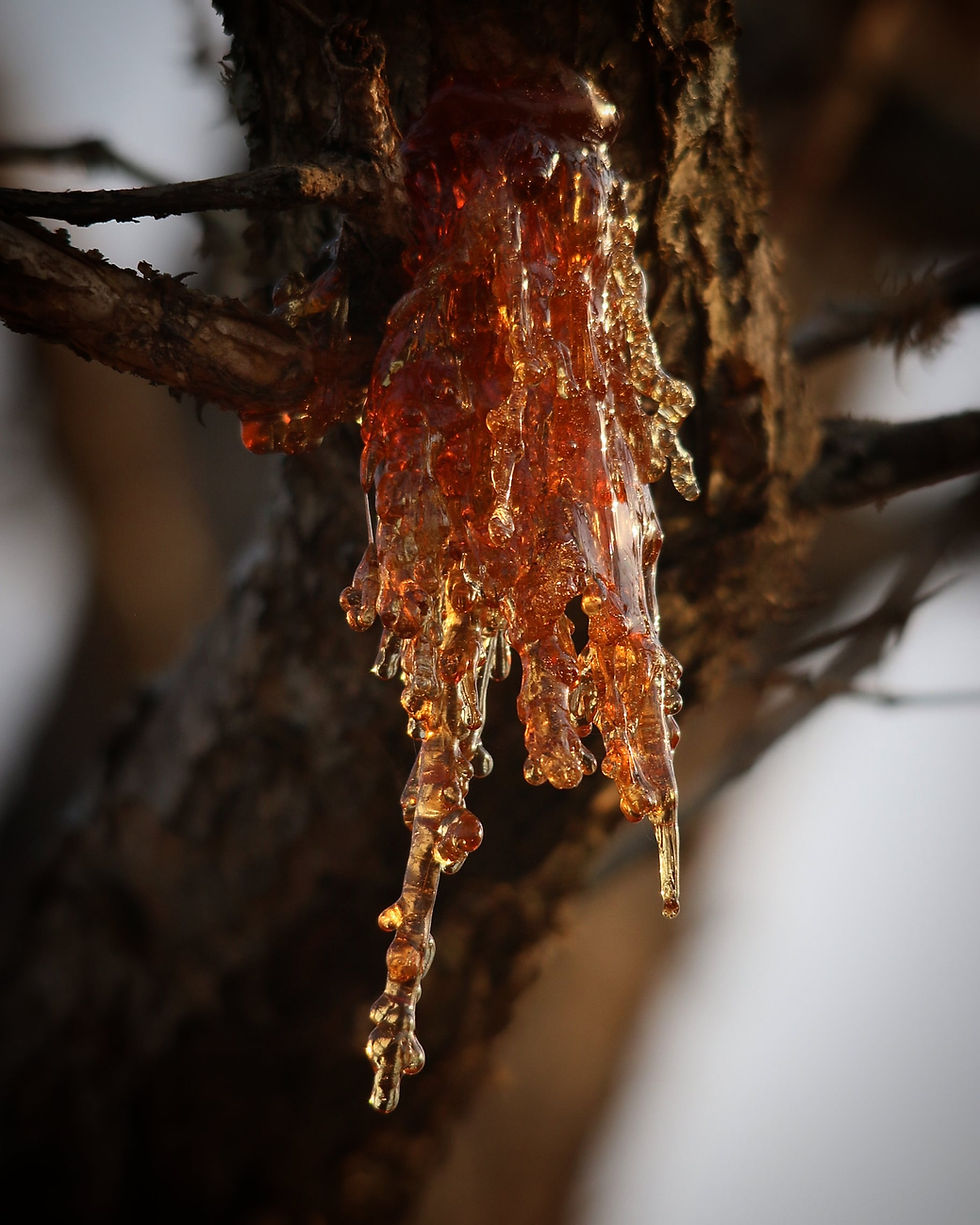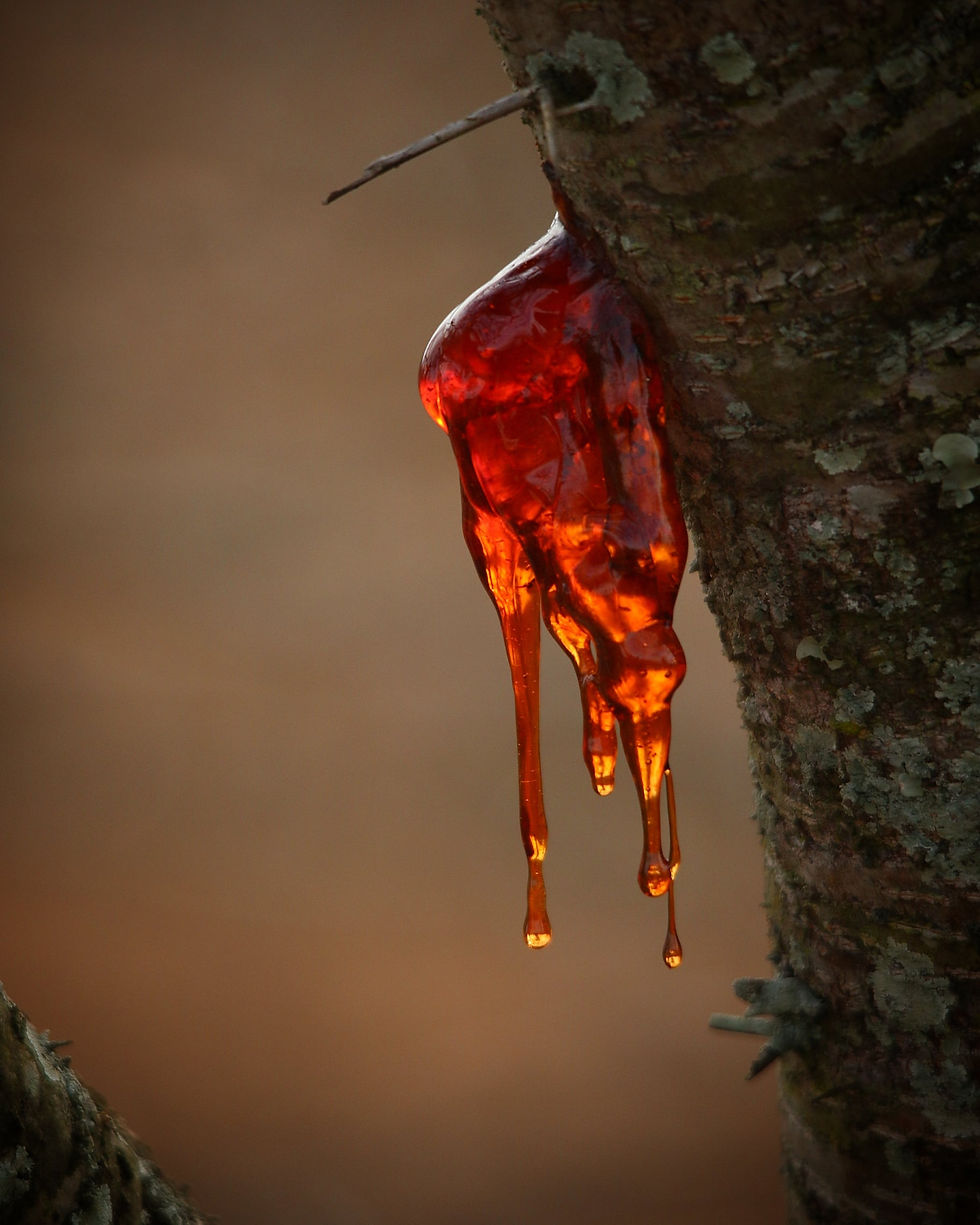Exploring Acacia Gum
Nestled within the vast African grasslands and lightly wooded areas, from the majestic Nile to the vibrant Western Cape in South Africa, the Acacia Tree stands as a testament to the resilience and diversity of the continent's flora.
Not only do these Trees thrive in arid conditions, signaling the presence of water both above and below ground, but they also play a pivotal role in the local ecosystem and economy.
Let's delve into the world of Acacias and the wonder that is called Acacia Gum, exploring its natural significance, economic impact, and cultural heritage.

The Versatile World of Gum Arabic
Acacia Gum, known by various names such as Gum Arabic, Gum Acacia, Gum Sudani, and Senegal Gum, is a natural substance derived from the hardened sap of the Acacia Tree species, Senegalia senegal and Vachellia seyal, Vachellia karoo, Vachellia tortillis and Vachellia robusta.
Despite its name, it is not limited to a specific botanical source and is predominantly harvested from wild Trees in Sudan, which contributes to about 70% of its global supply.
This versatile Gum stands as a testament to nature's bounty, offering a wide range of applications across industries.
Nature's Bounty
Acacia Gum is a natural treasure seeping from the Acacia Tree's bark. This edible gum is not just a critical component of the Bushbaby's diet; it also offers a sustainable source of income for communities living in the challenging conditions of Africa's dry regions.
Traditionally harvested by gently tapping into the bark, this practice allows the sap to flow out, collected during the dry season.
This method of harvesting ensures that the Tree is not harmed, making Acacia Gum an eco - friendly and renewable resource.
The uses of Acacia Gum are extensive and varied. In the culinary world, it finds its way into sweets, breakfast cereals, cold drinks, and much more, serving as a natural stabilizer and emulsifier.
Its role in the manufacture of cosmetics, like mascara, although less common, highlights its versatility. However, it's worth noting that in large quantities, Acacia Gum can cause flatulence due to fermentation by gut microflora after ingestion.

A Staple of Cultural and Economic Importance
Acacia Gum's significance transcends its physical uses. Historically, it symbolized the "noble Orient" in the works of European poets and playwrights.
In the Sahel, it represents the purity of youth, holding a special place in the cultural landscape of the region.
The economic impact of Acacia Gum, particularly in West Africa, cannot be overstated. From the 18th to the 19th centuries, it was a major export, with French and British colonies vying for control over its trade.
This 'Gum wars' era underscored the commodity's importance in pre - industrial economies, especially in textile printing.
Gum Acacia in Art and Industry
Beyond its economic and culinary applications, Acacia Gum plays a crucial role in the arts. It serves as a binder in watercolor painting, enhancing the luminosity of colors and allowing for more subtle control over washes.
Its use in ceramics as a binder and deflocculant, in photography for gum bichromate prints, and even in pyrotechnics, underscores its versatility and indispensability in various creative and industrial fields.
A Testament to Sustainability
Acacia Gum stands as a beacon of sustainability and eco - friendliness. Its harvesting promotes the wellbeing of underprivileged communities, offering them a means of livelihood that is in harmony with nature.
Moreover, its role in reducing the need for animal - based ingredients in products aligns with the growing global emphasis on sustainability and environmental conservation.

Conclusion
The Acacia Tree and its precious Acacia Gum are emblematic of the resilience, diversity, and beauty of Africa's natural landscape.
They remind us of the intricate connections between nature, culture, and economy, highlighting the importance of sustainable practices that benefit both the environment and the communities that depend on it.
About The Author
Kyle Grobler is a passionate environmentalist and esteemed field guide from Potchefstroom. With an unparalleled love for nature, he boasts a vast collection of over 40,000 photos, illustrating his particular affinity for birds.
Known by many as the embodiment of a true bushman, Kyle has ventured through various South African game reserves and frequently explores the Vaal River's hidden treasures. As a new contributor to the Potch Gazette's environmental page, readers can anticipate immersive tales of Potchefstroom's natural wonders through Kyle's expert lens.
To see more from Kyle and his bush experiences you can also view his Youtube Channel here: Kyle Grobler Photography
More Plant Stories
For more articles about plants you can click on the links below, there are so many great plants amongst us to discover and learn about as they play a major role in nature as we see it today.
Commelina Flowers: Click Here
Giant Stapelia: Click Here
Blood Lily: Click Here
Ground Lily: Click Here
Weeping Boer - Bean: Click Here
Fever Tree: Click Here
Giant Euphorbia: Click Here
Wild Olive: Click Here
Flowering Grass: Click Here
River Lily: Click Here
Baobab Tree: Click Here
Marula Tree: Click Here
Paintbrush Lily: Click Here
Tulbaghia: Click Here
Bell Agapanthus: Click Here
Spekboom: Click Here
White Water Lily: Click Here
Comments, Suggestions, Stories
Please do feel free to add any comments in our comments section below, we always love to hear about animals and experiences from our readers.



.jpeg)
